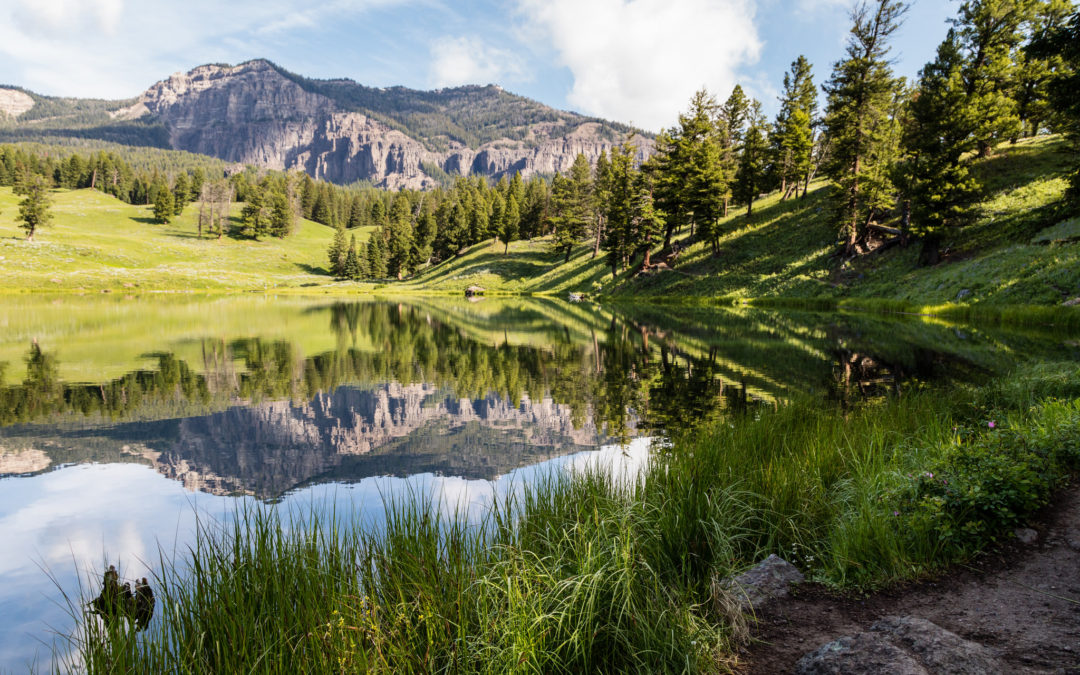Photo: National Park Service
Sometimes the best way to explore Yellowstone National Park is to get away from your car and into the backcountry. On the trail, it’s possible to leave most everyone behind and experience a Yellowstone most visitors never see. With over 900 miles of trails, it’s easy to find a hike that meets your interests and ability levels.
Here are five of the best Yellowstone hikes, each in a different area of the park:
1. Mammoth Hot Springs Area: Beaver Ponds Loop
This 5-mile loop trail is a great trail hike in the spring and early summer because of the varied terrain and the chance to see wildlife. The trail passes through mature Douglas fir and Engelmann spruce forests, open meadows, and past several ponds full of waterfowl. It’s not uncommon to see a blue grouse displaying, and – if you’re lucky – a black bear. Elk, deer, and colorful spring wildflowers are common as well. The trail starts to the right of the Liberty Cap in Mammoth Hot Springs. Distance: 5 miles Difficulty: Moderate
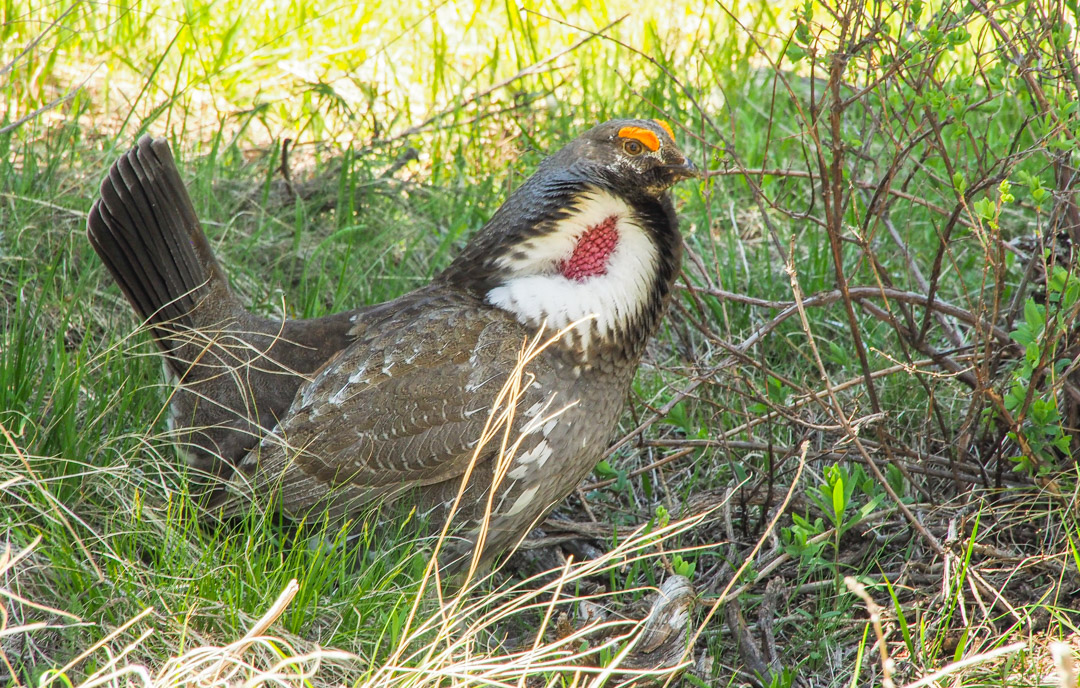
Photo: Jenny Golding
2. Old Faithful Area: Fairy Falls
Hot springs AND a waterfall make for a truly quintessential Yellowstone hike. This 5-mile out and back hike takes you past the iconic Grand Prismatic Spring, where you can climb up to a panoramic overlook of the colorful thermal feature. You’ll continue on from there to the delicate Fairy Falls, which drops 200 feet off a plateau formed by lava flows from the last Yellowstone super volcano eruption 2.1 million years ago. If you want to extend your hike, you can continue .6 miles to Imperial and Spray geysers, which will add 1.2 miles to your trip. Caution – stay on the trail – the ground near thermal features can be fragile, and you never know when hot scalding water is lurking underneath. The trail starts at the Fairy Falls Trailhead one mile south of Midway Geyser Basin on the Madison-Old Faithful Road. Distance: 5 miles round trip Difficulty: Easy
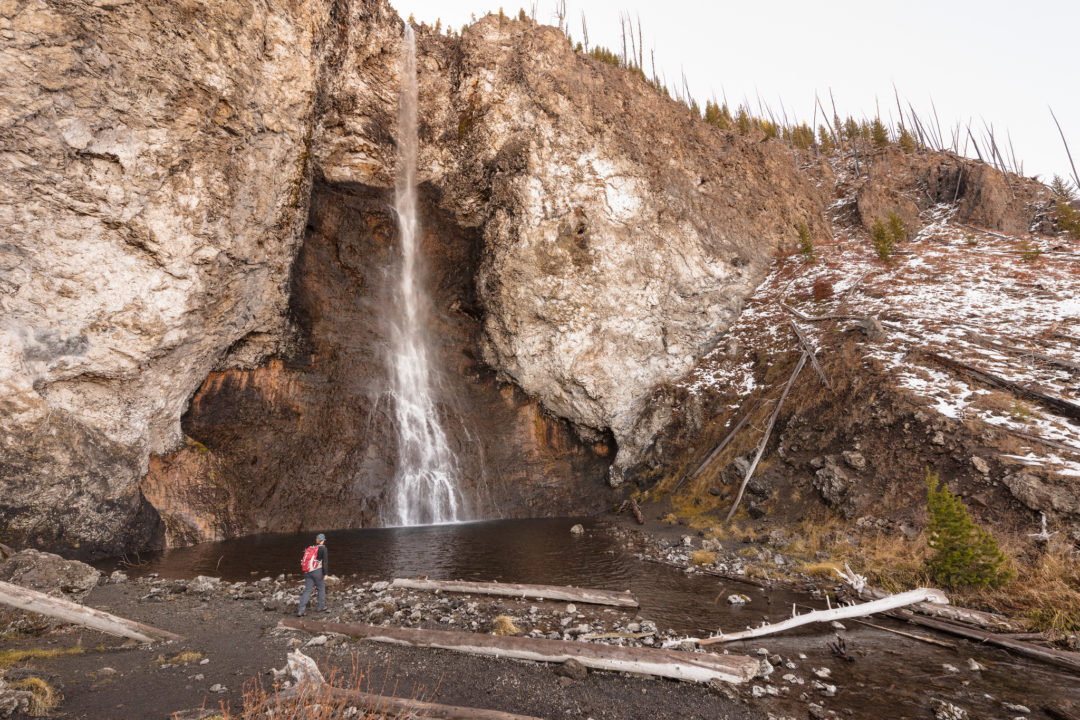
Photo: National Park Service
3. Yellowstone Lake Area: Storm Point
A great hike for families and everyone in between, this loop trail winds through thick lodgepole pine forest before breaking out onto the shoreline of Yellowstone Lake – the largest high elevation lake (above 7,000 feet) in North America. The views of the Absaroka Mountains across the lake are spectacular. Along the way, look for bear sign – scat, tracks, and scratches on trees – and waterfowl on the lake. Be extra cautious in foul weather – it’s called storm point for a reason; the rocky prominence is notorious for attracting lightning from miles away. On fair weather days, however, it’s a pleasant place to have lunch and soak in the serenity of the Lake. Distance: 2.3 miles round trip Difficulty: Easy
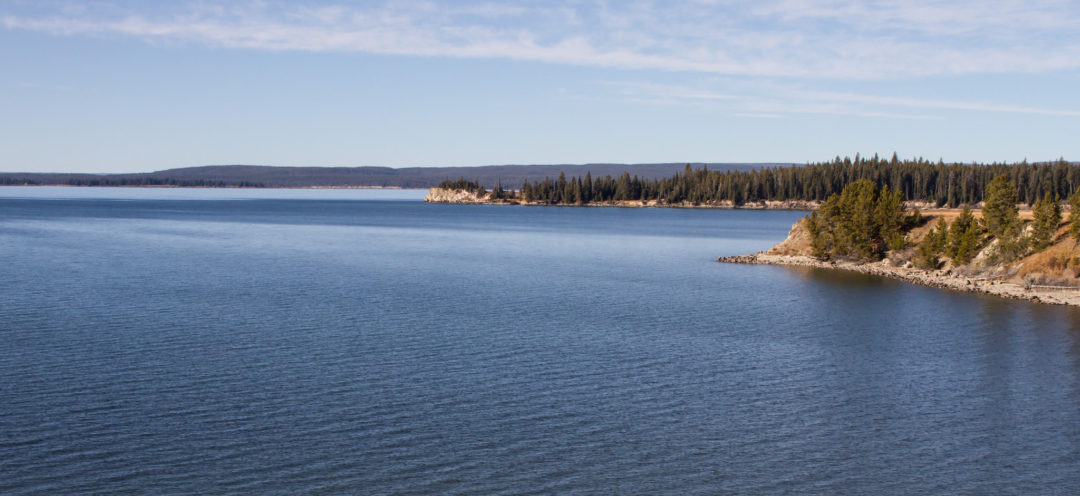
Photo: National Park Service
4. Canyon Area: Mount Washburn
If you are in the mood for a summit, Mount Washburn is a great hike. You’ll climb 3 miles to an elevation of 10,243 feet where you’ll find panoramic views of the park. On a clear day, you can often see the Teton Mountains. Spectacular wildflowers adorn the route in June, July, and early August, and you are likely to share the trail with bighorn sheep. It’s not uncommon to see a grizzly bear digging for roots on the high mountain slopes. There are two ways to hike this trail: from the southern trail at the Dunraven Pass Trailhead, or the northern trail which starts at the Chittenden Road parking area. Either way the distance is the same. Be sure to pack extra layers and a raincoat, it can be cold and windy at the top, and afternoon storms are common during summer. Distance: 6 miles round trip Difficulty: Strenuous
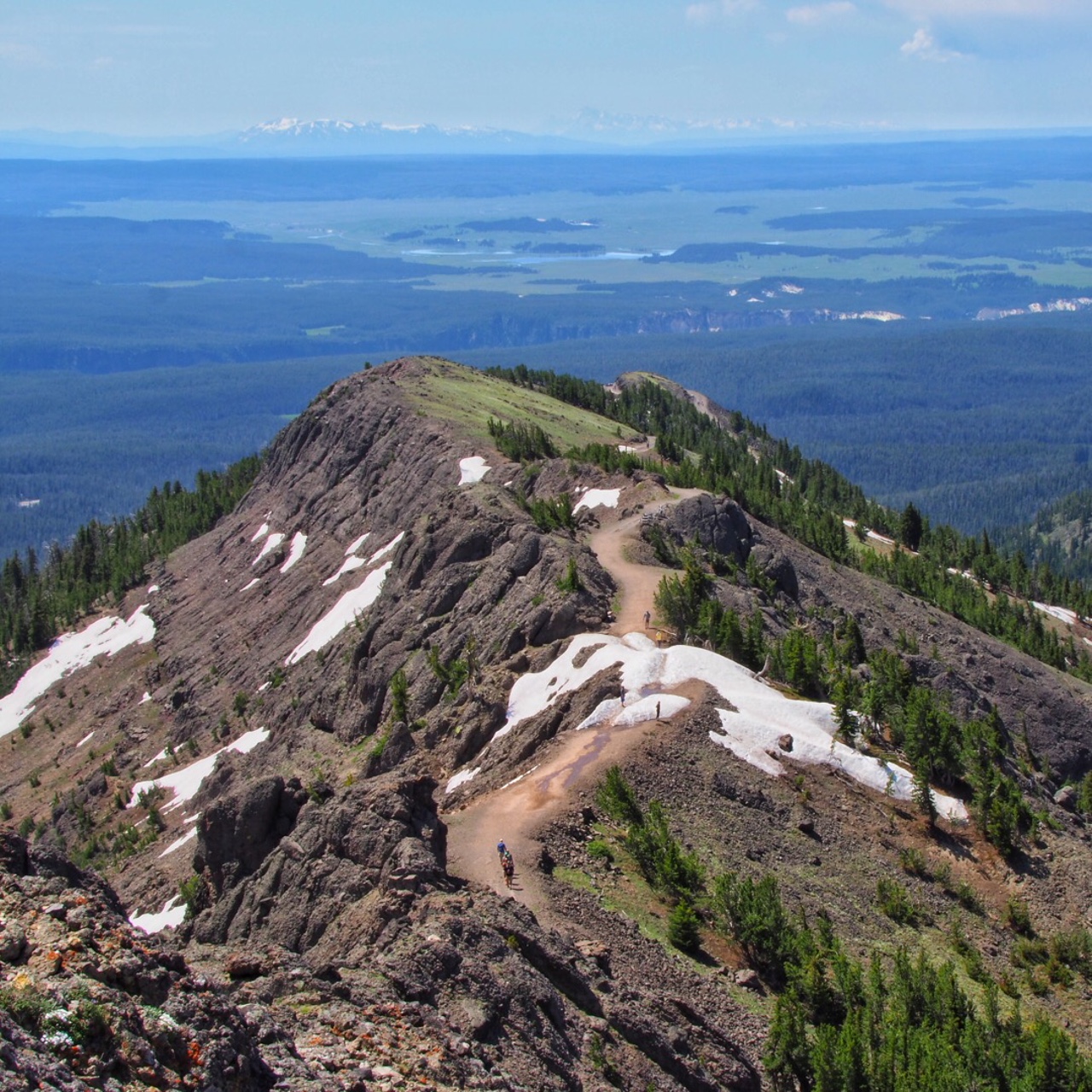
Photo: Jenny Golding
5. Northern Range Area: Trout Lake
A short but sweet hike to a real backcountry gem. Set in the bumpy hills of a long ago landslide, Trout Lake sparkles with reflections of the craggy Absaroka mountains towering above. If you go there in late June, you can see cutthroat trout spawning in the lake – and otters – if you’re lucky. A steep but short trail climbs about 150 feet to the lake, where you can then meander around the water’s edge on an easy loop trail. This is a great hike for families with children. The trailhead is located 1.5 miles south of Pebble Creek Campground on the Northeast Entrance Road. Distance: Round Trip 1.5 miles Difficulty: Moderate
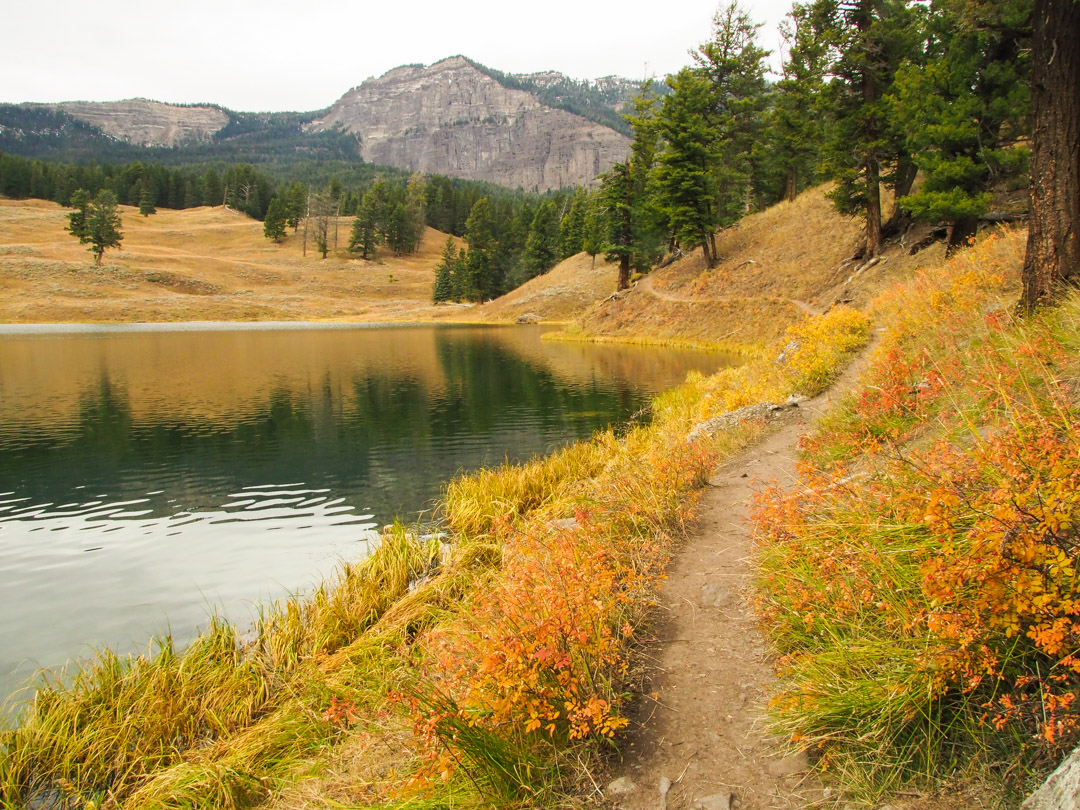
Photo: Jenny Golding
How to Day Hike in Yellowstone Safely
Regardless of what trail you hike in Yellowstone, it’s important to remember this is a mountain wilderness—do not travel into the backcountry unprepared. Even for short hikes, it’s important to carry bear spray, water, sunscreen, warm layers (all year long), and rain gear. Also, the park’s animals are truly wild – be sure to keep your distance from any wildlife you see; the park requires that you keep a distance of 100 yards from bears and wolves, and 25 yards from all other animals. Carry binoculars if you have them, and a telephoto lens and watch them from a distance. The park recommends you hike in groups of four or more for bear safety.
Want more information about other Yellowstone day hikes?
The National Park Service lists many hikes on their website: https://www.nps.gov/yell/planyourvisit/dhsampler.htm. When you arrive in Yellowstone, it’s always a good idea to check in with a park ranger at a visitor center to check current trail conditions and closures. The park’s nonprofit partner, Yellowstone Forever, offers a number of excellent trail guides and maps: https://shop.yellowstone.org/yellowstone-trails-a-hiking-guide, https://shop.yellowstone.org/a-rangers-guide-to-yellowstone-day-hikes.
You can also get more out of your hikes by tuning in to the subtle signs and sounds around you. Read these posts to find out how:
Bear-ly Aware: Deciphering Grizzly Bear Sign, Using Animal Language To Find Bears And Wolves In Yellowstone, and A Little Bird Told Me.
Need help planning your trip? Book a Yellowstone Trip Planning session with our favorite guide partners.

